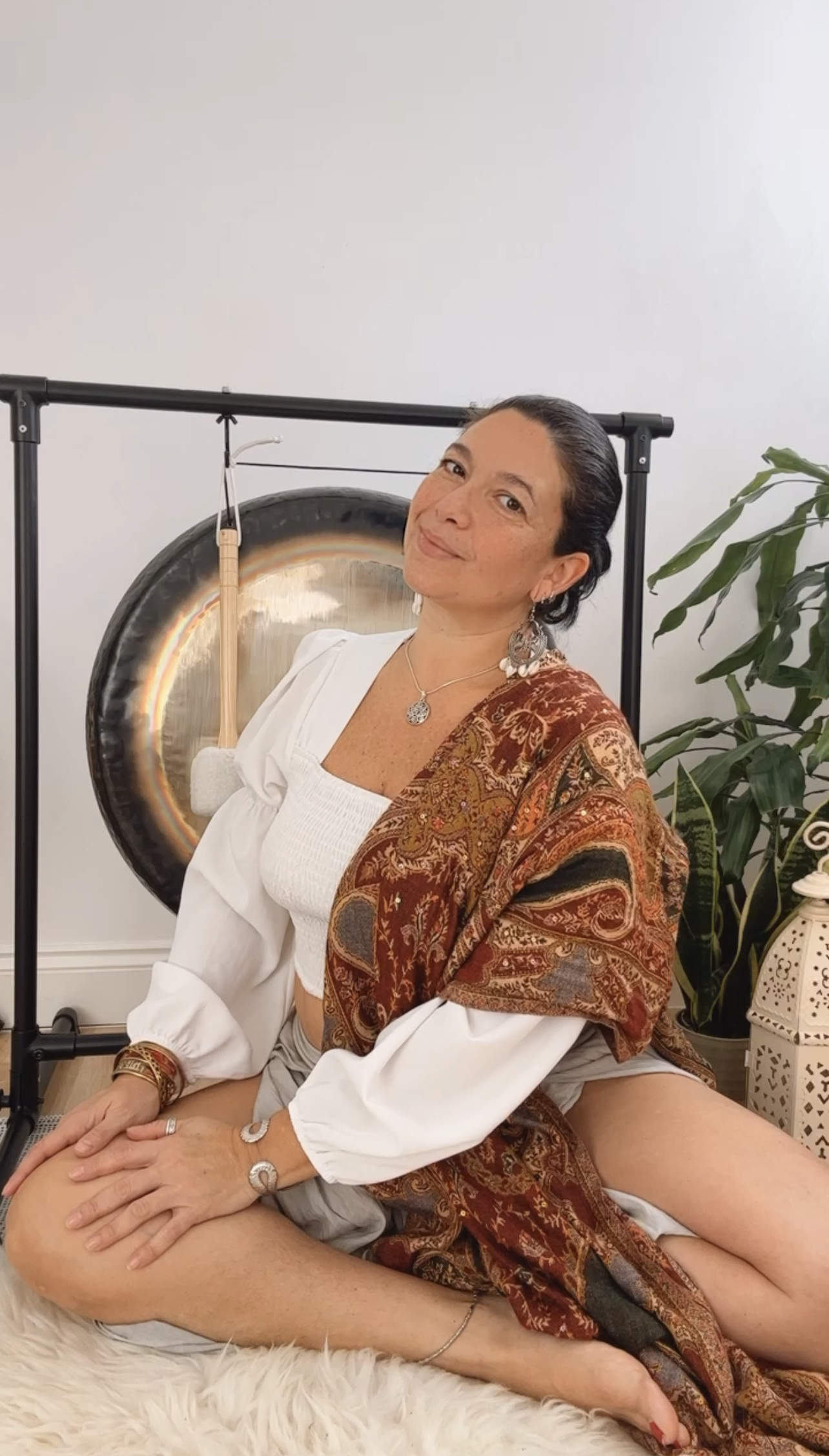Why KAP (Kundalini Activation Process) Is NOT a True Kundalini Awakening
- Thimela Garcia
- Apr 15
- 4 min read
In recent years, a practice called KAP — Kundalini Activation Process — has gained popularity across social media and the modern wellness world. Marketed as a direct, effortless way to awaken your Kundalini energy, it promises spontaneous movements, emotional releases, and even spiritual enlightenment.
As a Kundalini Yoga teacher, Reiki healer, and energy therapist, I feel it’s important to address this growing trend with honesty, clarity, and respect for the sacred traditions from which Kundalini originates.
If you’ve been curious about KAP or wondering if it’s right for you, this article will give you the grounded truth about what it really is — and why it’s not the same as authentic Kundalini awakening.
What Is KAP and How Is It Marketed?
Kundalini Activation Process (KAP) is a modern energy practice where participants lie down while a facilitator transmits energy, supposedly triggering the spontaneous awakening of Kundalini Shakti — the primal life force energy believed to reside at the base of the spine.
During a typical KAP session, people often report:
Involuntary body movements
Shaking and trembling
Emotional outbursts (crying, laughing)
Heat sensations or tingling
Vivid visuals and emotional releases
KAP is often marketed as a shortcut to awakening, bypassing years of spiritual practice, discipline, and inner work — something the ancient yogic texts would never endorse.
What Is Kundalini According to Yoga Philosophy and the Vedas?
In the Vedas, Upanishads, and classical Yoga philosophy, Kundalini Shakti is described as a sacred, dormant spiritual energy coiled three-and-a-half times at the base of the spine.
When awakened, this powerful energy rises through the Sushumna Nadi (the central energy channel), activating each of the seven chakras, eventually merging with Shiva consciousness at the crown.
This is not a casual, light-hearted experience. Traditional Kundalini awakening involves:
Years of disciplined sadhana (spiritual practice)
Breathwork (pranayama), kriyas, mantra chanting, meditation
Deep mental, physical, and emotional purification
Guidance from a qualified, lineage-based teacher
It’s a lifelong commitment — a sacred transformation that completely rewires your nervous system, expands your consciousness, and changes the trajectory of your spiritual path.
Why KAP Is Not the Same as Authentic Kundalini Awakening
What happens in a KAP session may look dramatic — people twitching, crying, laughing — but it’s important to understand this is not Kundalini rising in the way the ancient texts describe.
In most cases, what’s really happening is:
Emotional discharge stored in the nervous system
Somatic release (the body’s natural way of letting go of tension or trauma)
Psychological suggestibility or autosuggestion in group energy settings
Temporary sensations created by environmental and energetic influence
There is no evidence of Kundalini Shakti moving consciously through the chakras or the Sushumna Nadi in these sessions, nor of the lasting transformational effects a true awakening brings.
To label these spontaneous bodily reactions as ‘Kundalini awakening’ is misleading and trivialises one of the most sacred, profound processes in yoga philosophy.
The Risks of Misusing Kundalini Terminology
Using the term ‘Kundalini awakening’ lightly, especially in public group sessions without adequate preparation, can be irresponsible and potentially harmful.
Risks include:
Nervous system overwhelm
Energetic imbalance
Unprocessed trauma being triggered without proper integration
Spiritual bypassing (avoiding real inner work by chasing high-energy experiences)
Misinformation spreading in the wellness community
This matters because Kundalini is not a casual or recreational energy. It’s a force that, when genuinely activated, demands total life realignment, spiritual discipline, and support from experienced, integrity-led guides.
My Advice as a Kundalini Yoga Teacher and Energy Healer
If you’re drawn to working with energy, spiritual awakening, or healing practices, I encourage you to:
Be discerning with what you engage in
Honour ancient wisdom and sacred practices
Choose experienced, lineage-based teachers
Practise daily with discipline and care for your nervous system
Focus on integration, grounding, and embodiment rather than chasing intense peak experiences
There are no shortcuts to spiritual growth.
It’s a lifelong journey of self-inquiry, healing, devotion, and practice.
Your energy is sacred. Your soul deserves more than a trendy technique promising instant enlightenment.
Conclusion
While KAP may provide temporary energetic sensations or emotional releases, it is not a genuine Kundalini awakening as described in the Vedas, Upanishads, or Yoga Philosophy. True Kundalini awakening is a profound, disciplined, and sacred process — one that should be approached with care, patience, and respect.
I believe in protecting the integrity of this ancient path, while offering grounded, safe, and holistic practices for those seeking true transformation.
If you’d like to explore authentic Kundalini Yoga, energy healing, or holistic spiritual practices, I invite you to follow me, book a session, or explore my workshops and online offerings.
Let’s reclaim sacred energy work with integrity.
About Me
I’m a Kundalini and Hatha Yoga teacher, Author, Crystal Reiki healer, sound therapist, and holistic wellness practitioner based in London. I specialise in chakra balancing, energy healing, womb healing, and spiritual wellbeing for women — offering in-person and online services, retreats, and digital products designed to empower, heal, and transform.
Follow me on Instagram @chakramamahealing for authentic, grounded wisdom on Kundalini, chakras, energy healing, and holistic wellbeing.
Or visit my website at https://www.chakramamahealing.com to explore upcoming events, workshops, and one-to-one sessions.





Comments